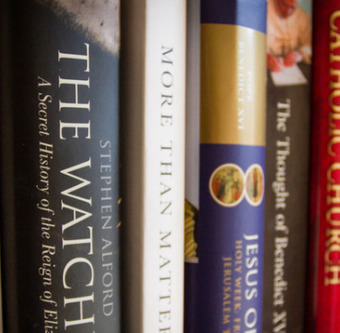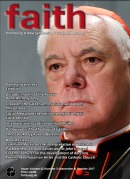
Book Review
Making Newman fit Congar
The Prophetic Church - History and Doctrinal Development in John Henry Newman and Yves Congar by Andrew Meszaros, Oxford University Press, 268pp, £65.00.
reviewed by James Tolhurst
Fr. Aidan Nichols included the French Dominican Yves Congar when examining doctrinal development up to the present day in his From Newman to Congar, published in 1990. Andrew Meszaros now concentrates on Congar’s writings to show how Congar’s and Newman’s ecclesiology intertwine. The book either emerged from a thesis or a special academic paper, as evidenced by all the technical apparatus. This means you will have to deal with jargon such as ‘the progression-adaptation-plenitude side of tension’ and ‘the Ordinary Sign Enthymeme’. The author was a Fellow of Louvain and now is a Theology Lecturer in St. Patrick’s College, Maynooth,
The ‘sensus communis’
Yves Marie-Joseph Congar was born in 1904 in Sedan, North-West France. He became a Dominican and taught at Le Saulchoir, where he worked with Marie-Dominique Chenu. As a military chaplain he was interned in Colditz during the war and for a long time was under a cloud for his views until rehabilitated at the time of Vatican II. He was made a Cardinal just before he died in 1995. Congar’s work, which is identified with ecumenism as well as Church history, concentrated on aspects of ecclesiology: “The Church is in the world and the world is in the design of God.”
Mezsaros highlights how Congar welcomed Newman’s view of the sensus fidei of the individual believer being extended to the sensus communis of the faithful. This also helped him to see that the members of the Church preserved the faith intact by virtue of receiving the faith promulgated actively by the hierarchy, a faith continually preached. He argued that Newman’s Idea possessed by the Church is “an essence, a structure, or a form, but incarnated in temporal matter” Does that mean the Church is endowed with a conscience? Can we say “history aided, prompted, or forced the Church to recognize what exactly constitutes the truth of a doctrine,” and what about the prompting and directing role of the Holy Spirit?
Projecting Congar onto Newman
Mezsaros explains how development as seen by Newman and Congar differs from the modernism of perennial evolution, resulting of its nature in a relativization of doctrine. (This is covered more comprehensively by Nichols.) He goes on to discuss how Newman is received by Congar - born just after the death of the Cardinal - who saw himself as the inheritor, or perhaps interpreter, of his thoughts. Interestingly, Congar admitted, “I love Newman – I cannot say that I am an expert or that I know him very well.” Mezsaros now seeks to project Congar back on to Newman and show that his thoughts can be seen in symmetry with those of Newman.
Blurred boundaries
The author argues that there is “a substantive case for the exercise and legitimacy of an infallible teaching authority in both the ancient and the Roman Catholic Church” (p.67.) But that is all we get except for a reference to Vatican I. Congar, for most of his life, saw the papacy as ultimately derived from the College of bishops as successors of the apostles and was reluctant to use the term Vicar of Christ. Newman, however, had noted in 1866: “What a Bishop is to his Church – such the Pope to all Bishops and the whole Church. A Bishop of Bishops.” This, we should remember was prior to the decree of Vatican I. Later, he referred in his 1877 preface to Via Media to the Pope being “the Ecumenical Bishop and one Pastor of Christ’s flock.” Meszaros says that future development “must be extracted by the mediation of the Christian believer who is in touch with the divine realities transmitted by the doctrinal tradition and sacramental life of the Church ... with ambiguity and struggle.” This is very much Anglican comprehensiveness or the Orthodox theory of economy, which tend to leave the boundaries rather blurred.
A concept to be parsed
As such, the book is a good introduction to Congar’s thoughts (it has an excellent index), but it does not enter into the depths of Newman’s theology and extenuates the role of the papacy. This makes Newman’s development of doctrine a philosophical concept to be parsed – even if a model of felicitous wisdom. It does provide Meszaros with a platform to display Congar’s own views which he does with skill. The Dominican theologian spent most of his life struggling with the concept of the role of the Pope as Pastor of the universal Church and head of the College of bishops. For Newman, however, it played an essential part in his own journey from shadows and empty forms into the abiding reality of the Catholic Church - ex umbris et imaginibus in veritate.
Notes:
Fr James Tolhurst has written The Church, A Communion in the Preaching and Thought of Cardinal John Henry Newman, published by Gracewing.





